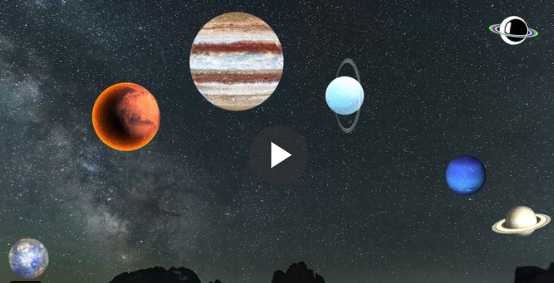Planetary Parade: A six-planet alignment, or “planet parade,” took place, providing a spectacular sight. As noted by astronomy experts, these alignments are rare and “offer a humbling perspective of our place within the solar system,” highlighting the dynamic nature of celestial mechanics. Such events inspire curiosity and serve as a reminder of the wonders present in the night sky, encouraging both casual observers and avid stargazers to look up and explore the cosmos more deeply (Daily Galaxy) Daily Galaxy
Conjunctions and Meteor Showers: During this month, there was also a close conjunction of Jupiter and Mars, which appeared just a third of a degree apart—a stunning visual less than the width of a full moon. Preston Dyches from NASA described this event as “a super close meetup of Jupiter and Mars,” emphasizing the unique opportunity it provided for observation in the morning sky. He also highlighted the peak of the Perseid meteor shower, which could be viewed under optimal conditions, offering a visual feast of meteors in clear skies (NASA Science) NASA Science
2024 has been an exciting year for stargazers, and there’s still plenty to see before the year ends. As August wraps up, skywatchers are in for a treat with a “planet parade,” showcasing six planets, along with a meteor shower. Additionally, the moon will align with three different planets on three separate nights, offering even more celestial wonders.
There will be a planet parade on the morning of August 28 🪐
Scaled up from left to right — Mercury, Mars, Jupiter, Uranus, Neptune, and Saturn will align in the sky before sunrise ☀️
It will be visible almost everywhere pic.twitter.com/1gfNVUI6Gq
— Latest in space (@latestinspace) August 28, 2024
During the last week of August, Jupiter, Mars, and Mercury will be in conjunction with the moon on different nights. In astronomical terms, a conjunction occurs when two planets or celestial bodies appear close together in the sky. The sequence starts with Jupiter, followed by Mars, and finally Mercury. This will be the second opportunity this month to see Jupiter, Mars, and the moon appearing close together.
If you missed Jupiter near the moon earlier this morning, you still have a chance to catch the next conjunction. On the early morning of Wednesday, August 28, Mars will take Jupiter’s place, positioning itself closer to the moon. Both Mars and the moon will rise around 1:30 a.m. local time across the eastern United States and remain visible throughout the night. While they won’t be as close as Saturn and the moon were earlier this month, they will still be relatively near each other. Jupiter will also remain in the vicinity, adding to the spectacle.
🔭 A “parade of planets” will pass over the Earth again: six planets in the solar system will line up on Wednesday, August 28, 2024.
– FRWL pic.twitter.com/lMQrJ4yHfs
— Zlatti71 (@Zlatti_71) August 28, 2024
Looking ahead, on the morning of Sunday, September 1, Mercury will join the moon in the pre-dawn sky for a few hours. Mercury is expected to rise around 6 a.m. local time, right next to a nearly new moon, which will appear as just a faint sliver. This dim moon phase is actually beneficial, as Mercury is the hardest of the three planets to spot with the naked eye. A less illuminated moon makes it easier to see the faint planet.
For Jupiter and Mars, a telescope or binoculars won’t be necessary. Both planets will shine brightly in the night sky, and with the moon being less than half full, spotting them should be fairly easy once you know where to look. Because these celestial bodies will be in close proximity for several nights, locating one will help you find the others.
However, spotting Mercury might be more challenging. While it is technically bright enough to be seen without any magnification, it might be helpful to have binoculars or a telescope handy. Mercury isn’t particularly bright, especially just before dawn, and reports about its visibility with the naked eye vary. To ensure you don’t miss it, having some optical assistance could be beneficial.
The parade of six planets will be visible on August 28.
Mercury, Mars, Jupiter, Uranus, Neptune, Saturn, and the waning Moon will align on one side of the Sun in 15 hours. This event occurs once every 18-20 years. @elonmusk pic.twitter.com/rz3h9LdWBH
— Russian Market (@runews) August 27, 2024
For those who need guidance on where to look, tools like the “Time and Date” night sky guide can be very helpful. Additionally, smartphone apps such as “Sky Tonight” for Android and iOS can assist in locating these planets and enhancing your stargazing experience.
More
UK Space Agency Insights: The UK Space Agency provided practical tips for viewing these celestial events, such as the optimal times and conditions to observe the Perseid meteor shower and the conjunction of Mars and Jupiter. They also noted a lunar occultation of Saturn, where the moon passed in front of Saturn, a rare occurrence providing another thrilling opportunity for stargazers (UK Space Agency) Gov.uk Space
Major Points:
- The end of August 2024 will feature a “planet parade” with six planets visible in the night sky, along with a meteor shower.
- During the last week of August, the moon will align with Jupiter, Mars, and Mercury on three separate nights, creating a stunning celestial display.
- Mars and the moon will be visible together early on August 28, while Mercury and the moon will appear close just before sunrise on September 1.
- Mars and Jupiter will be bright enough to see without a telescope, though binoculars or a telescope might be helpful for spotting Mercury, which is dimmer.
- Resources like the “Time and Date” night sky tool and apps like “Sky Tonight” can help locate the planets and enhance the viewing experience.
RM Tomi – Reprinted with permission of Whatfinger News

